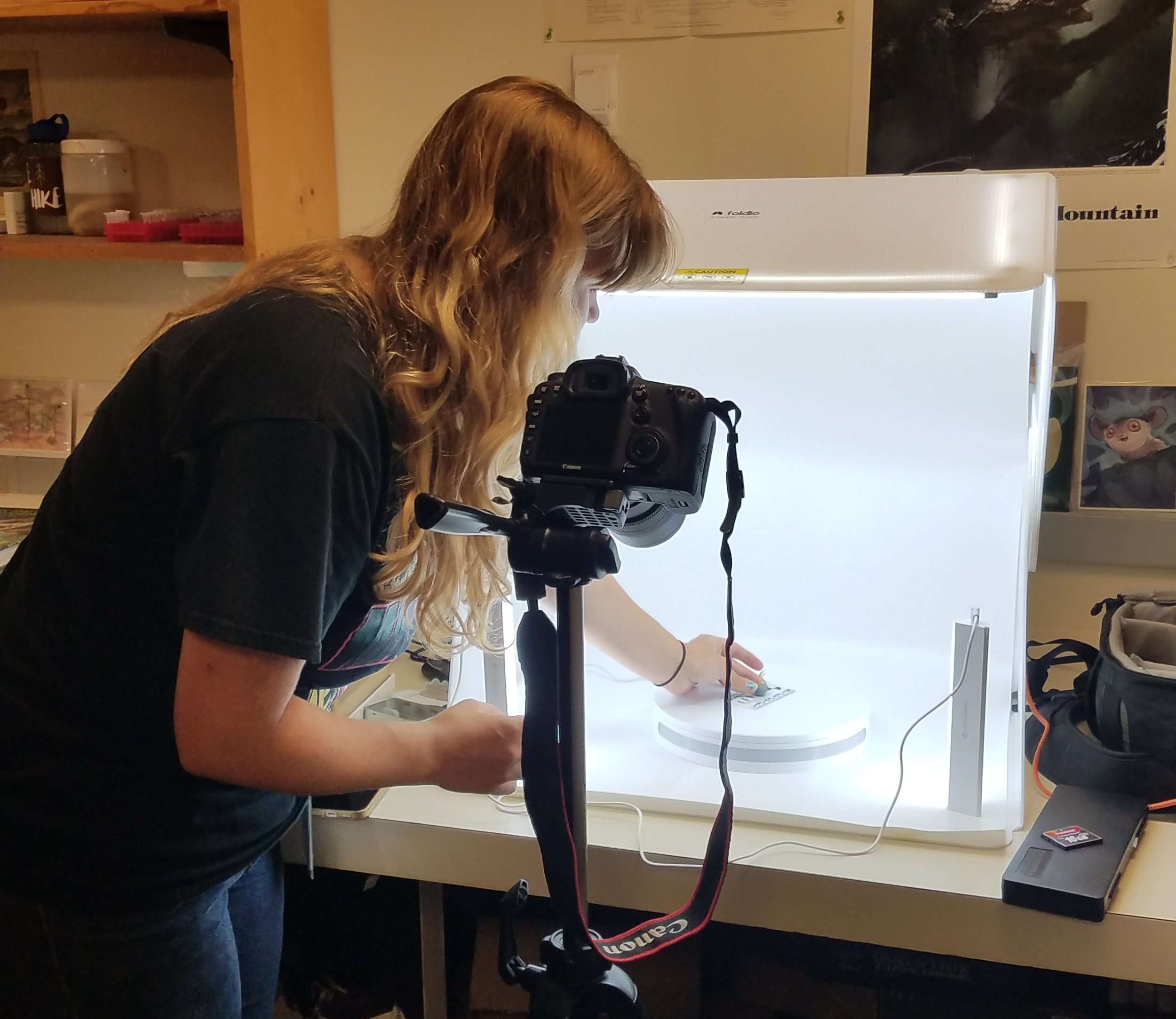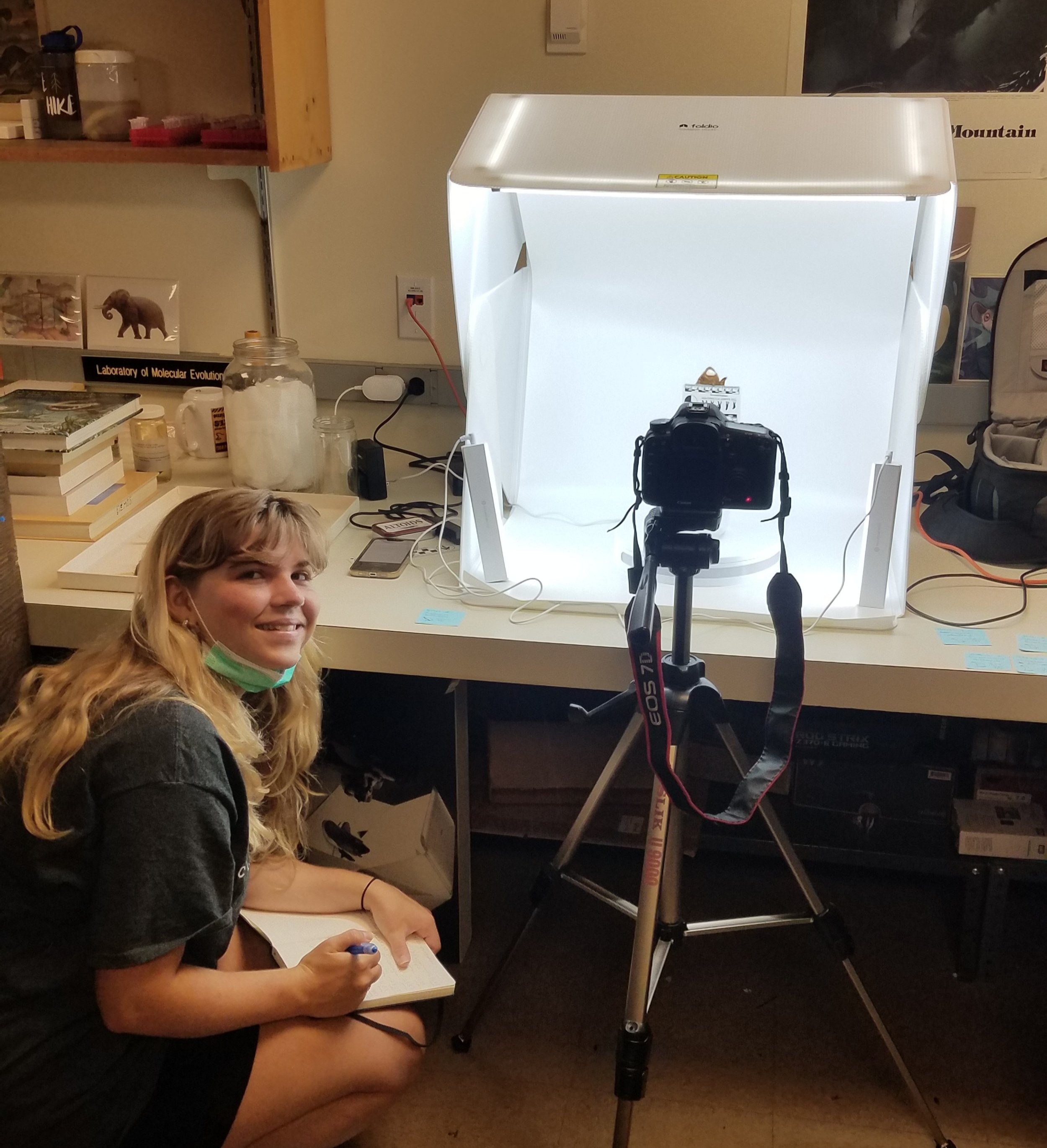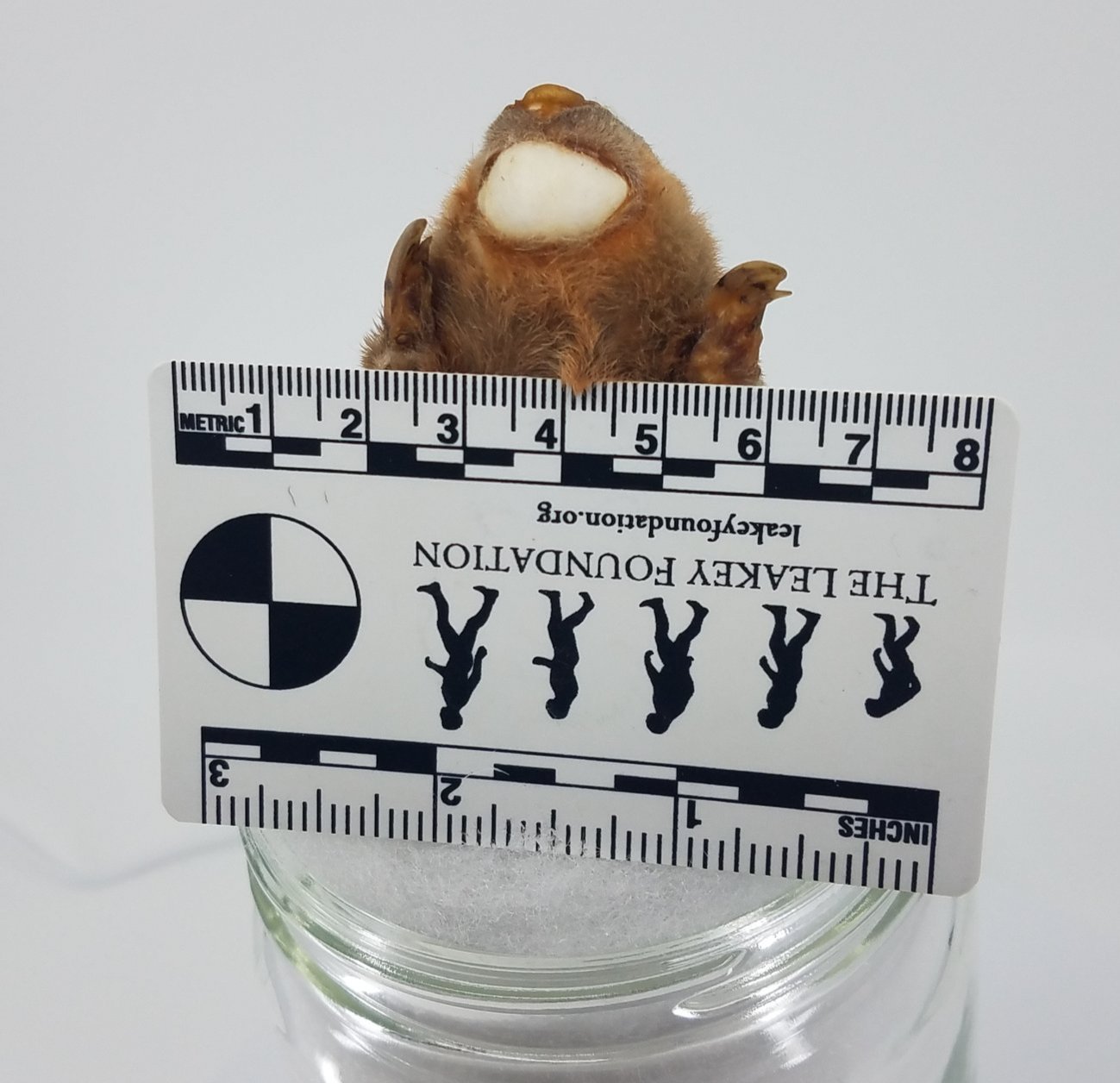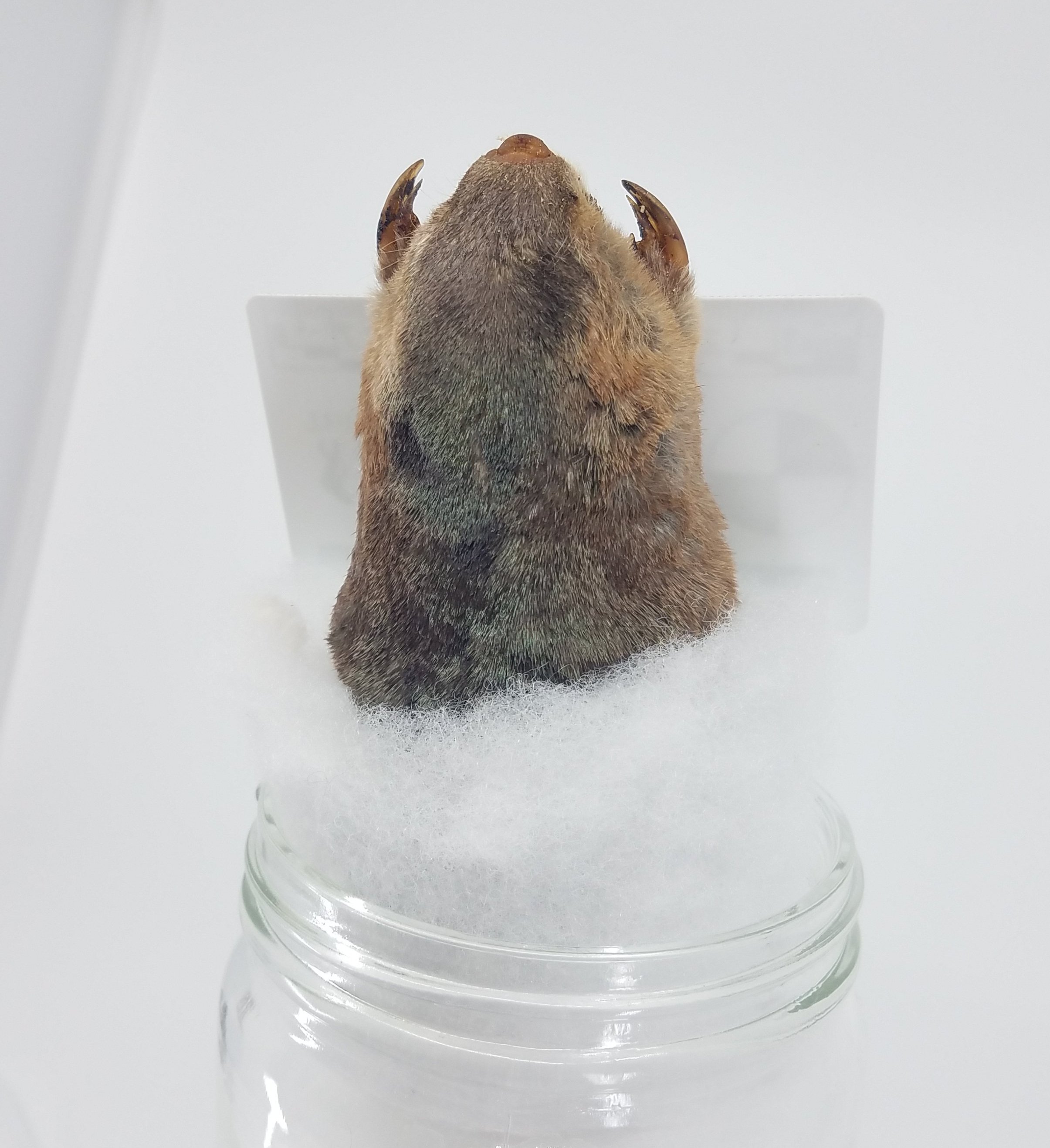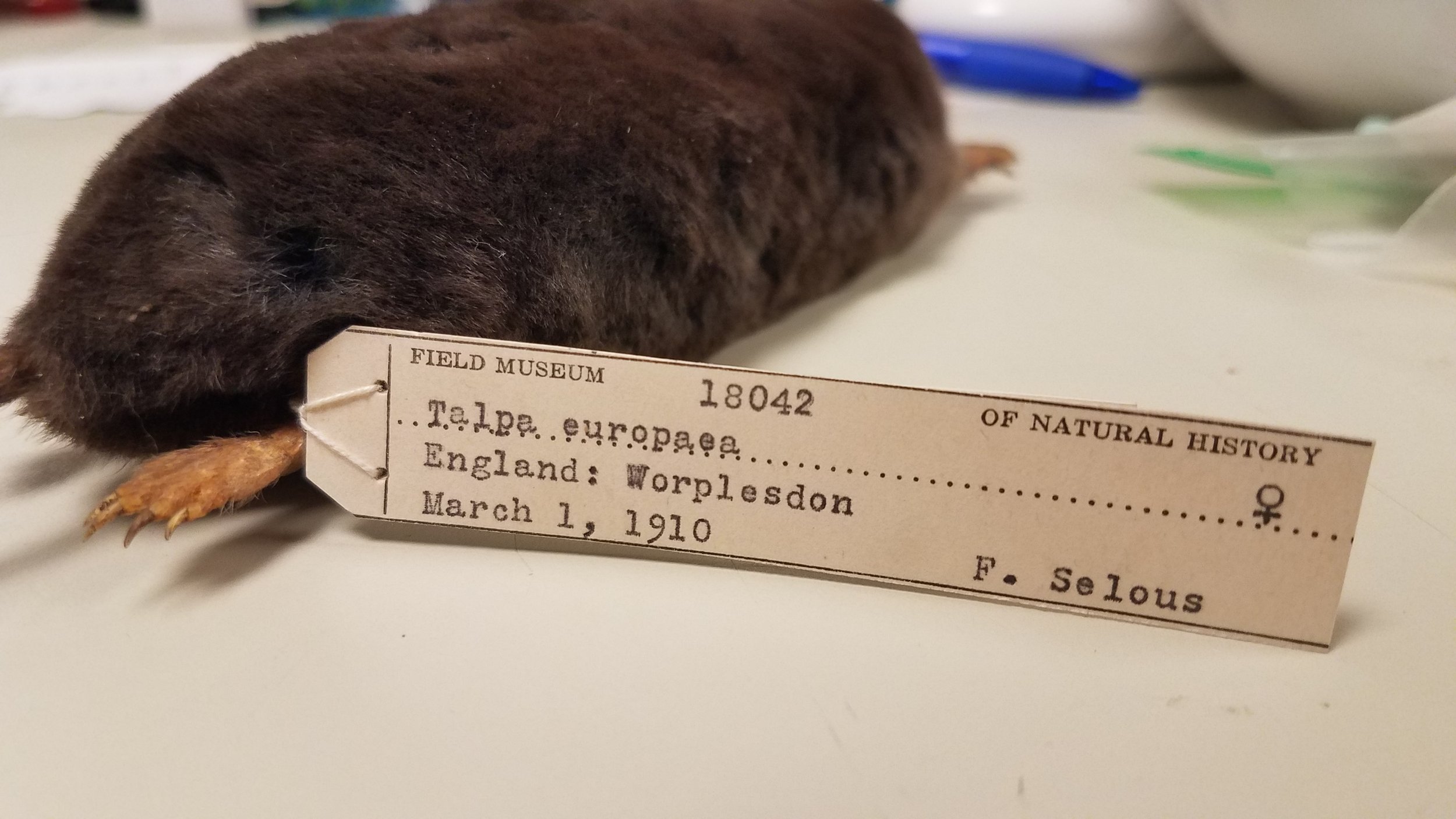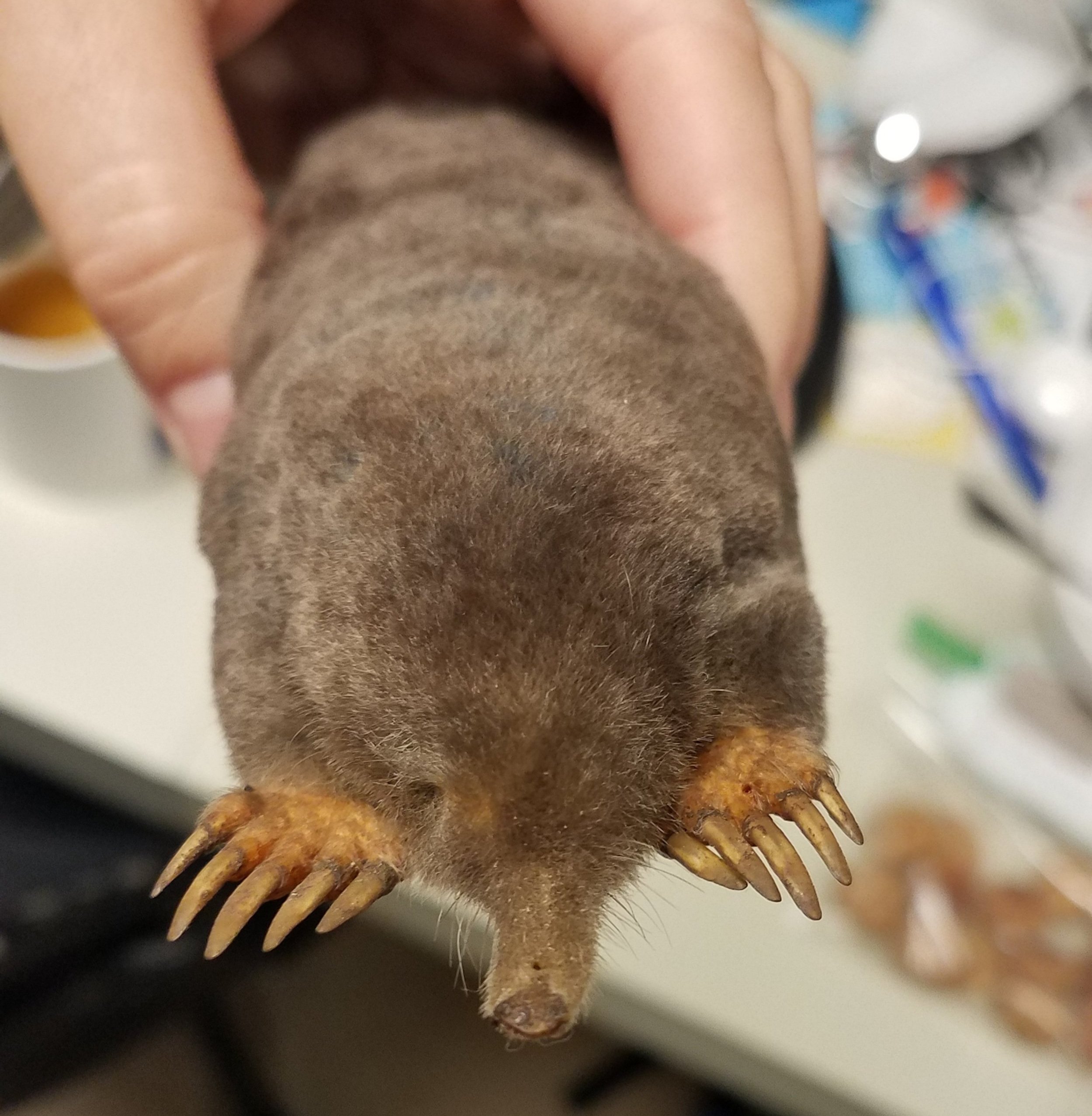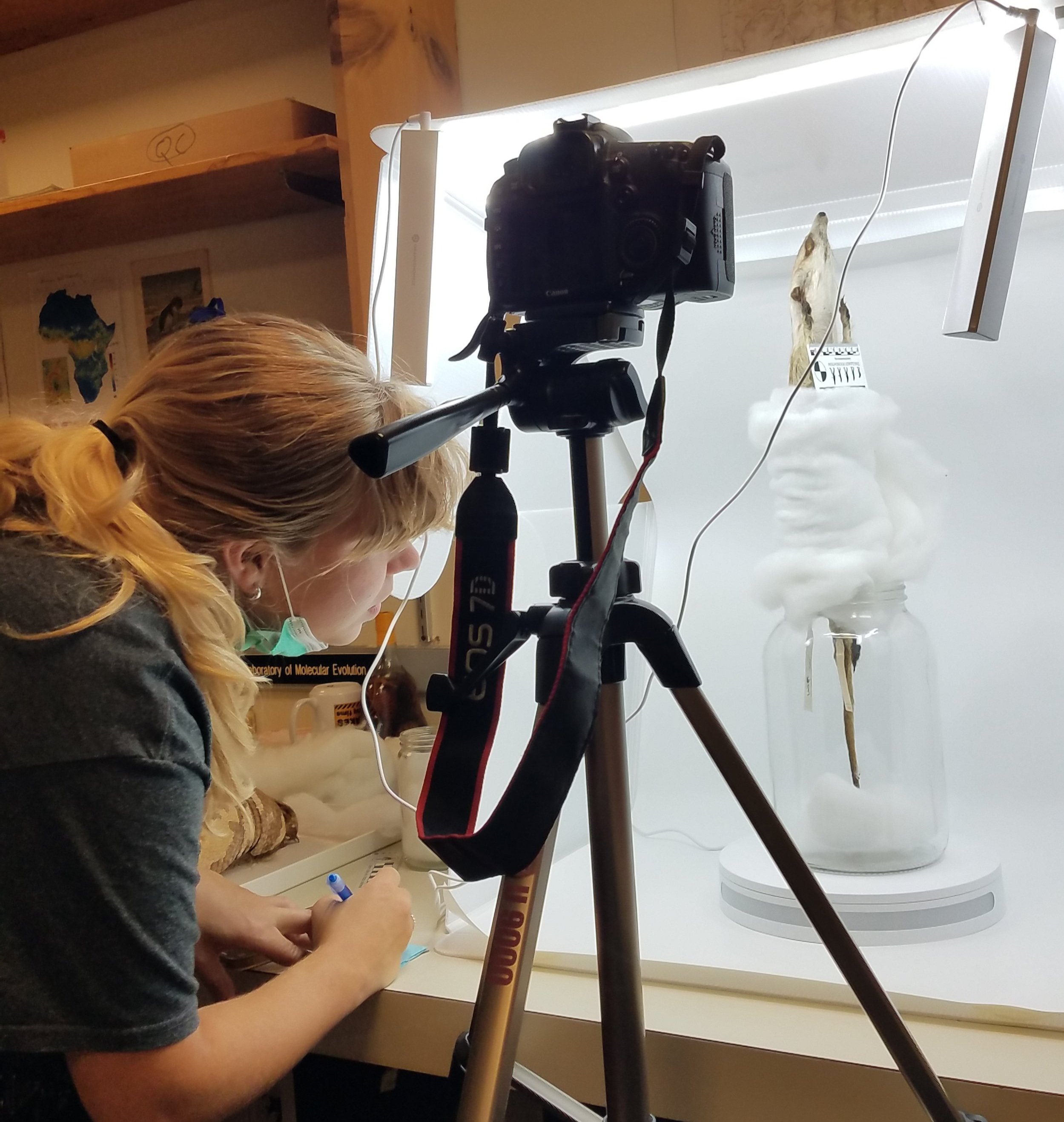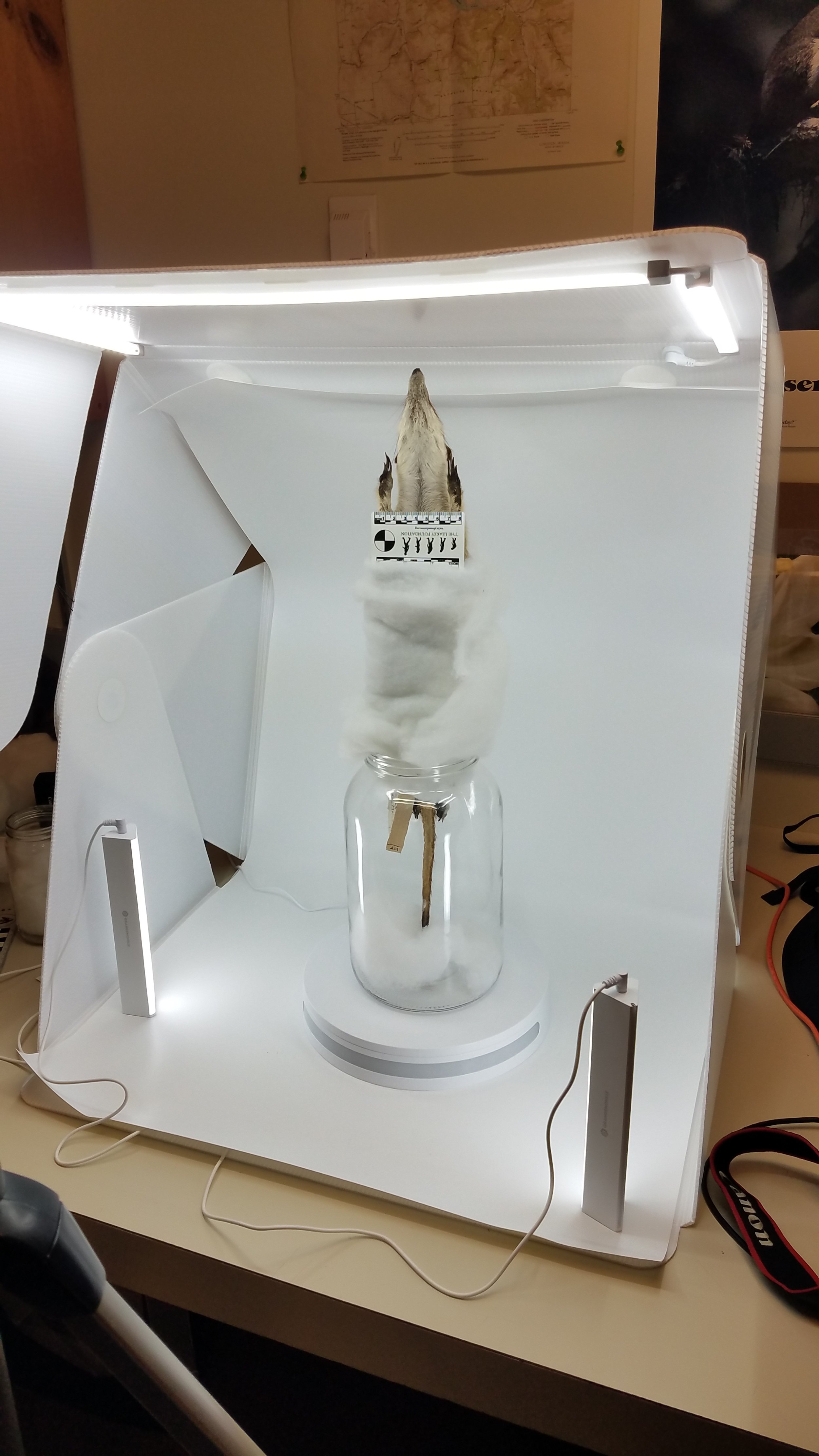How does claw shape and size relate to degree of fossoriality?
Fossoriality is a common behavioral trait among an ecologically and phylogenetically diverse range of mammals. Digging in mammals has been studied in both behavioral and morphological contexts. These studies have examined skeletal indicators of digging and focused on functional implications of claw, digit, and forelimb morphologies. Although fossoriality is common in mammals, few studies have examined the interplay between phylogenetic, functional, and body size controls on relative claw size and shape. To understand how claw shape relates to body size, clade, and digging behavior, I am working with two students (Mallory Ayersman, DePaul University, and Hartrich Zack, University of Chicago), and Ken Angielczyk (Field Museum), to quantify the 3D morphology of mammalian claws using photogrammetry. Mallory is the lead on this project, and has received funding from DePaul to execute the research.
3D Model of a golden mole specimen, shown in Metashape, produced with our photogrammetric setup.
So far, we have collected size and shape data on the claws of 55 specimens of eulipotyphlans, afrosoricids, rodents, xenarthrans, and carnivorans from the mammalogy collections at the Field Museum of Natural History. Our specific anatomical focus is on the keratinous sheath on the third digit of the manus. We are using the keratinous sheath of wild animals only, rather than the bony core, because the sheath is the actual piece of morphology that interacts with the substrate during digging. It has been a great adventure to figure out how to incorporate both study skins and dry skeletons into our workflow, but our joint efforts have produced incredibly detailed 3D surface models for mesh-based spherical harmonic (SPHARM) geometric morphometrics.
We are still deep in the data collecting and analysis process, but several observable trends have already emerged. Digging carnivorans have relatively smaller, narrower claws with strong curvature, whereas fully subterranean eulipotyphlan moles have broad, flat claws. Chrysochlorids (Afrosoricidae) have dorsoventrally deep, robust claws which are distinct from those of eulipotyphlan moles, even though chrysochlorids are also fully subterranean. Xenarthrans tend to have deep claws with varying degrees of curvature. Digging deeper into the data, we hope to elucidate how much the functional capabilities of these claw shapes differ, and assess the possibility of many-to-one mapping for differently shaped claws in animals with similar ecologies.
Working in collections is fun! This project started during the Covid-19 lockdown, and we were all thankful to get back to our fuzzy and bony friends in the mammal range. See below some shots of the incredible specimens we’ve been using for this work, and our cool setup for capturing 3D images.

